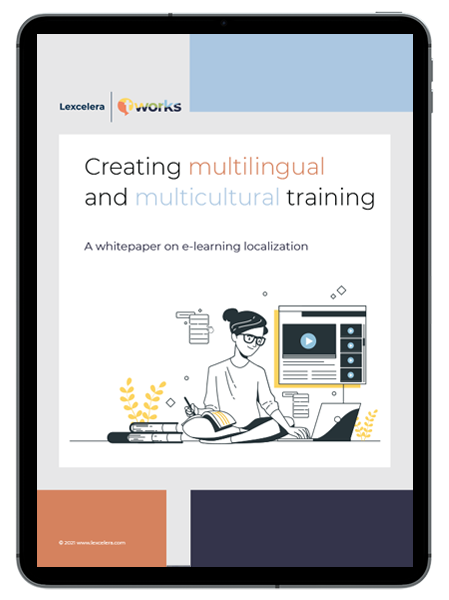E-learning continues to be on an upward trend globally. It has opened up many an opportunity amidst the pandemic for people to pursue their professional education dreams, upskill themselves, or simply learn something new.
For global companies, the online medium provides a great opportunity to continuously train their employees and keep them in sync with industry developments at a time when global travel is challenging.
However, going forward, e-learning will be a part of our lives with or without the pandemic. One can learn at one’s own pace from wherever one wants to and from the device of one’s choice. What’s not to like?
As people from multilingual backgrounds take to this form of learning in great numbers, some trends in e-learning localization have begun to emerge. We discuss these trends in this post.
Localization of all aspects of the course
Localization includes translation of the text, audio, video, and adaptation of the entire course content to the target locale.
Audio and video content need to be transcribed and then either subtitled or dubbed. Voice over is also an option for translating media content. Tools are available to automate the process of transcription, subbing, and dubbing. However, a layer of professional editing will be required to make sure no errors have crept in and quality is maintained.
Next, the entire course content has to be localized for the learner’s locale. This refers to adapting even the smallest details such as name and address format, script orientation, visual elements, and so on, to the locale. Such attention to detail will go a long way in creating a very authentic experience for the learner.
Language-led immersive learning is the way ahead
Keeping the learner engaged is a real issue. The use of Augmented Reality (AR) and Virtual Reality (VR) tools will increase to make the learning experience very real and relatable for the learner.
Gamification too will see more maturing with learners demanding a more vivid and game-like feel.
However, imagine this: you have created an immersive experience using these tools. If the interface is not translated and the learner needs to interact in a language that is not his/her mother tongue, it can hardly be called an immersive experience.
So, language is the beginning of an immersive experience. Of course, you need much more to truly create immersion, but if you don’t start with language, you’re on shaky ground.
Greater use and integration of language tools with learning management systems
The language and translation technology landscape is rapidly evolving. With the power of artificial intelligence (AI), these tools make the translator’s work go much faster and easier. As these tools have the capability of continually learning on their own, the quality keeps improving, resulting in a much better training program.
Learning management systems (LMS) and language and translation solutions will get integrated more closely going forward. This will enable seamless translation as well as translation into many more languages.
Global content partners take centrestage
Localization delivers the best results when it is integrated with content creation. For this to happen, global content providers must become your partners. This enables them to advise you on avoiding pitfalls in content creation that can take much effort and time to correct later on. For instance, if you embed text in images or videos, it can remain in the source language even in translated versions. This will create a jarring effect. And, correcting this can take a lot of effort, as it will have to be done in image or video editing tools for each language you’re translating into.
Making it more accessible to translators
Micro content formats are popular in training modules. These typically have shorter sentences. This lends itself to easier translation as the translator can easily view and translate them on their mobile apps. This too contributes to their productivity as they can simply translate even when they are commuting or are outdoors.
Translation will be needed in more language combinations
E-learning has become hugely popular in all corners of the world since the pandemic. This will bring people speaking many different languages to online education.
That means, more translators from these languages and with experience translating e-learning content will be needed. It might bring up the challenge of additional and trained resources. However, we expect that given the demand for such e-learning translation, the challenge would only prove to be teething trouble.

Localization has moved from being a nice-to-have feature to a must-have feature in online learning programs. This trend will only grow stronger, as it becomes imperative to make e-learning accessible to learners from around the world.
Localizing a training program for employees around the world comes with certain challenges.
Vijayalaxmi Hegde











